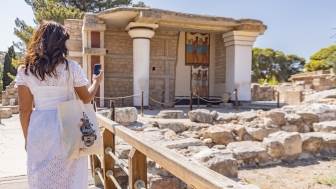For some time now we are working on organizing the material we have collected over the years, to be able to easily and quickly locate whatever we are looking for. As the company grows and adds new tours (approximately two per month), it is paramount that order reigns among our files, that seem to multiply like dandelions on the front lawn.
Being relatively new in the company, I was perusing all these files to get an idea of the direction Clio’s founders wished to take. There was one group of files I found particularly interesting and which I will describe as “boats waiting to be launched”. Lack of time had led to the postponement of many projects, some of which were rather ground-breaking. None of them was as bold as the route dedicated to cats.
Athens is full of cats, treating all passerby almost like slaves who simply exist and use their hands to serve them. This is a great opportunity for foreign visitors and inquisitive locals to explore the city with a focus on the cats, rather than the monuments that now must serve as a background. The history of Athens was divided in five periods (from classical Athens to the Ottoman period) and we identified a corresponding number of locations where, whether you want to or not, you will come across some cats basking in the Greek sun among the ruins and the traditional houses. An old-fashioned guidebook will provide the necessary info on the monuments; Clio Muse will shine a light on the cats.
The most unexpected discovery during the research was the almost complete absence of cats in classical Athens. The ancient Greeks had various pets but you were more likely to see a cheetah on a leash than a cat on the roof. It was only during the Roman Empire that this animal managed to escape from the loving (and crushing) embrace of the Egyptians and spread throughout Europe. At the same time cats decided to enrich their colour palette; the fur’s old and uniform pale colour was now expanded with the addition of black and white.
After all these weeks of research, it is now almost impossible to look as a cat balancing atop a wall in downtown Athens without thinking of Mechlempae the cat of the Byzantine Empress Zoe, who lived the dream; he ruled the palace and had an army of servants at his disposal, catering to his every need. Perhaps in the future, when cats decide it is time to openly rule this world, Mechlempae will take his place in the first chapter of the “History of the Cat’s Conquest of the World” as the pioneer who showed the way for the rest of his species.














































































































